
|
Now it is so bright as 8.2 mag (Nov. 12, Chris Wyatt). It is observable in excellent condition in the Southern Hemisphere. In the Northern Hemisphere, it locates too low to observe in November. It will be observable in the evening low sky in December and January.
Date(TT) R.A. (2000) Decl. Delta r Elong. m1 Best Time(A, h)
Nov. 15 3 6.38 -56 9.1 1.081 1.648 105 7.9 23:21 ( 0, 69)
Nov. 22 1 56.99 -53 19.7 1.217 1.729 102 8.3 21:47 ( 0, 72)
|
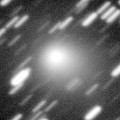
|
Now it is bright as 9.2 mag (Nov. 16, Marco Goiato). It will approach to the earth in December and January, and it is expected to brighten up to 7 mag. In the Southern Hemisphere, it keeps observable in excellent condition until late January. In the Northern Hemisphere, it keeps extremely low until mid December. But after that, it will be observable in excellent condition.
Date(TT) R.A. (2000) Decl. Delta r Elong. m1 Best Time(A, h)
Nov. 15 8 0.65 -44 30.1 1.385 1.708 90 10.5 3:08 (309, 72)
Nov. 22 7 53.61 -44 37.1 1.238 1.645 94 10.1 3:02 (319, 76)
|
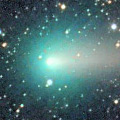
|
The brightness evolution has slowed down just before the perihelion passage. But it brightened up to 6.5 mag in September (Sept. 21, Marco Goiato). Now it is fading. It has faded down to 10.6 mag in October (Oct. 21, Chris Wyatt). It is not observable now. It will be observable again in late December in the Northern Hemisphere, or in mid January in the Southern Hemisphere. But the comet will fade down to 13 mag.
Date(TT) R.A. (2000) Decl. Delta r Elong. m1 Best Time(A, h)
Nov. 15 15 47.96 -11 17.4 2.113 1.151 9 10.9 20:21 ( 61,-19)
Nov. 22 15 51.07 -10 7.2 2.220 1.259 9 11.2 20:30 ( 55,-25)
|
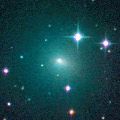
|
It brightened rapidly. Now it is so bright as 10.9 mag (Nov. 9, Neil Norman). In the Northern Hemisphere, it keeps observable in good condition until the comet will fade out in next spring. It is not observable in the Southern Hemisphere.
Date(TT) R.A. (2000) Decl. Delta r Elong. m1 Best Time(A, h)
Nov. 15 16 43.95 78 40.7 1.192 1.648 97 11.2 20:21 (166,-38)
Nov. 22 17 49.58 71 32.5 1.254 1.648 93 11.3 20:30 (157,-36)
|
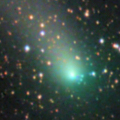
|
The brightness evolution had been slow, and has slowed down furthermore before the perihelion passage. It brightened up to 9.4 mag in September (Sept. 18, Chris Wyatt). However, it is already fading. It has already faded down to 11.0 mag (Nov. 10, Rob Kaufman). It will be unobservable in early November in the Southern Hemisphere, or in late November in the Northern Hemisphere. In the Northern Hemisphere, it will be observable in excellent condition after January while the comet will be fading. Some reported it brightened in November. Chris Wyatt reported it is bright as about 9.6 mag on Nov. 12.
Date(TT) R.A. (2000) Decl. Delta r Elong. m1 Best Time(A, h)
Nov. 15 17 41.23 -13 18.5 2.134 1.431 34 11.7 20:21 ( 77, 4)
Nov. 22 17 43.42 -10 59.4 2.238 1.455 29 11.9 20:30 ( 74, -4)
|
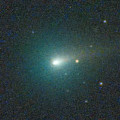
|
Now it is so bright as 10.8 mag (Oct. 28, Mike Wolle). It keeps observable in the morning low sky at the same brightness for a while. In the Southern Hemisphere, it is too low to observe until December.
Date(TT) R.A. (2000) Decl. Delta r Elong. m1 Best Time(A, h)
Nov. 15 12 35.41 2 22.6 1.842 1.347 45 11.8 3:08 (267, 0)
Nov. 22 13 0.30 0 15.9 1.831 1.346 45 11.7 3:02 (269, 1)
|
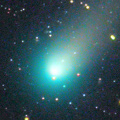
|
It brightened rapidly in outburst in mid October in 2013. Now it is fading. It has already faded down to 13.0 mag (Oct. 18, Con Stoitsis). In the Southern Hemisphere, it keeps observable in good condition for a long time until the comet fades out. In the Northern Hemisphere, it keeps extremely low after this.
Date(TT) R.A. (2000) Decl. Delta r Elong. m1 Best Time(A, h)
Nov. 15 21 57.32 -46 47.7 3.596 3.610 82 13.0 20:21 ( 53, 65)
Nov. 22 22 3.51 -45 57.1 3.749 3.677 78 13.1 20:30 ( 58, 60)
|
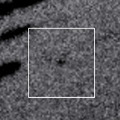
|
Now it is 17.5 mag (Oct. 8, Taras Prystavski). It will brighten very rapidly, up to 10 mag in January. In the Northern Hemisphere, it will be geting higher gradually. In the Southern Hemisphere, it will be getting lower gradually, and it keeps extremely low after January.
Date(TT) R.A. (2000) Decl. Delta r Elong. m1 Best Time(A, h)
Nov. 15 18 23.17 -27 31.8 1.655 1.150 42 14.2 20:21 ( 70, 20)
Nov. 22 18 50.42 -26 46.3 1.615 1.101 42 13.5 20:30 ( 70, 18)
|
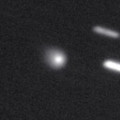
|
Now it is 14.0 mag (Nov. 12, Chris Wyatt). Getting brighter than originally expected, and it is already visible visually. It is expected to brighten up to 4 mag from autumn to winter in 2015. It is observable in good condition in the Southern Hemisphere until the highlight, or in the Northern Hemisphere after the highlight.
Date(TT) R.A. (2000) Decl. Delta r Elong. m1 Best Time(A, h)
Nov. 15 22 28.68 -25 40.6 4.722 4.937 96 13.8 20:21 (110, 69)
Nov. 22 22 25.97 -25 41.6 4.777 4.867 89 13.8 20:30 (100, 61)
|

|
Big asteroid discovered in 1906. It suddenly showed the cometary activity on Dec. 11, 2010, probably due to an impact of a small object. It has already turned to be stellar.
Date(TT) R.A. (2000) Decl. Delta r Elong. m1 Best Time(A, h)
Nov. 15 4 40.34 20 26.3 2.459 3.409 160 14.0 1:06 (180, 35)
Nov. 22 4 34.14 20 34.3 2.433 3.409 169 13.8 0:33 (180, 34)
|
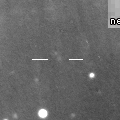
|
It will brighten up to 8-9 mag in 2015 spring. But it is not observable now. In the Southern Hemisphere, it will become observable in January, then it keeps observable in good condition after that. In the Northern Hemisphere, it keeps extremely low and hard to observe from December to 2015 June. It will be observable in good condition after June while the comet will be fading gradually.
Date(TT) R.A. (2000) Decl. Delta r Elong. m1 Best Time(A, h)
Nov. 15 14 20.02 -12 30.7 2.930 1.994 15 14.1 3:08 (295,-12)
Nov. 22 14 36.11 -13 57.0 2.861 1.948 18 13.8 3:02 (295,-10)
|
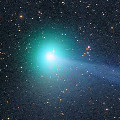
|
It brightened up to 6.0 mag from July to August (July 24, Maik Meyer). Now it is fading. It has already faded down to 12.0 mag (Oct. 25, Seiichi Yoshida). It keeps observable in good condition until November in the Southern Hemisphere, or December in the Northern Hemisphere.
Date(TT) R.A. (2000) Decl. Delta r Elong. m1 Best Time(A, h)
Nov. 15 19 22.24 -1 26.5 2.715 2.410 61 13.9 20:21 (101, 18)
Nov. 22 19 26.56 -2 5.2 2.917 2.503 56 14.3 20:30 ( 96, 12)
|
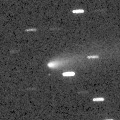
|
Now it is 14.0 mag (Oct. 26, Todd Augustyniak). It is fainter than originally predicted by 2 mag. In the Northern Hemisphere, it keeps observable at 14 mag in excellent condition from 2014 summer to 2015 spring. It locates somewhat low in the Southern Hemisphere.
Date(TT) R.A. (2000) Decl. Delta r Elong. m1 Best Time(A, h)
Nov. 15 10 31.77 19 25.4 1.937 2.018 80 14.1 3:08 (234, 13)
Nov. 22 10 44.85 18 46.7 1.877 2.027 83 14.0 3:02 (234, 15)
|

|
Now it is not observable. It will appear in the morning sky again in January.
Date(TT) R.A. (2000) Decl. Delta r Elong. m1 Best Time(A, h)
Nov. 15 16 21.24 -28 45.1 7.031 6.095 17 14.1 20:21 ( 53, -1)
Nov. 22 16 27.40 -28 55.0 7.053 6.093 12 14.1 20:30 ( 48, -6)
|
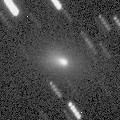
|
Now it is 13.8 mag (Oct. 28, Sandor Szabo). It will be observable at 14.5 mag in excellent condition from October to December.
Date(TT) R.A. (2000) Decl. Delta r Elong. m1 Best Time(A, h)
Nov. 15 5 31.69 29 34.5 0.809 1.730 147 14.5 1:57 (180, 25)
Nov. 22 5 29.53 31 29.8 0.796 1.741 154 14.5 1:28 (180, 24)
|
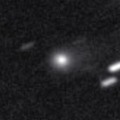
|
Now it is 14.8 mag (Sept. 16, Taras Prystavski). It is expected to brighten up to 13 mag and to be observable in good condition in 2015. It becomes unobservable temporarily from October to January.
Date(TT) R.A. (2000) Decl. Delta r Elong. m1 Best Time(A, h)
Nov. 15 15 48.41 -11 9.0 4.668 3.698 9 14.5 20:21 ( 61,-19)
Nov. 22 15 58.60 -11 39.1 4.649 3.676 8 14.5 20:30 ( 56,-23)
|
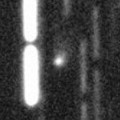
|
Now it is 16.8 mag (Oct. 27, K. Hills). It was expected to keep 14-15 mag for a long time from 2014 autumn to 2015 autumn. But actually, it is fainter than this ephemeris recently. In the Southern Hemisphere, it keeps observable in excellent condition for a long time. In the Northern Hemisphere, it is unobservable until 2015 June.
Date(TT) R.A. (2000) Decl. Delta r Elong. m1 Best Time(A, h)
Nov. 15 9 16.70 -50 30.0 2.391 2.362 76 14.8 3:08 (311, 58)
Nov. 22 9 8.73 -55 33.8 2.295 2.320 79 14.7 3:02 (323, 60)
|
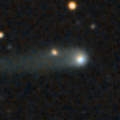
|
Now it is 14.4 mag (Oct. 27, Sandor Szabo). It keeps 15 mag for a long time from 2014 to 2015. It is observable in excellent condition in 2014 in the Southern Hemisphere, or in 2015 in the Northern Hemisphere.
Date(TT) R.A. (2000) Decl. Delta r Elong. m1 Best Time(A, h)
Nov. 15 0 21.38 -28 24.6 3.477 4.016 116 14.7 20:43 (180, 83)
Nov. 22 0 17.09 -26 46.8 3.546 4.001 110 14.8 20:30 (153, 81)
|
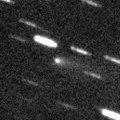
|
Now it is 14.3 mag and visible visually (Oct. 25, Seiichi Yoshida). It keeps observable for a long time after this while the comet will be fading gradually.
Date(TT) R.A. (2000) Decl. Delta r Elong. m1 Best Time(A, h)
Nov. 15 9 45.18 3 33.4 2.169 2.305 85 14.8 3:08 (238, 33)
Nov. 22 9 50.89 2 43.3 2.121 2.347 90 14.9 3:02 (235, 36)
|

|
Now it is 13.5 mag (Oct. 25, Seiichi Yoshida). It keeps bright as 13-14 mag for a long time from 2013 to 2014.
Date(TT) R.A. (2000) Decl. Delta r Elong. m1 Best Time(A, h)
Nov. 15 21 0.47 -25 54.7 3.318 3.258 77 14.8 20:21 ( 91, 51)
Nov. 22 21 7.73 -25 10.2 3.424 3.269 72 14.9 20:30 ( 88, 45)
|
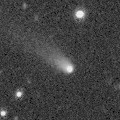
|
Now it is 14.4 mag (Oct. 20, J. Gonzalez). It will be observable at 14 mag in excellent condition in winter.
Date(TT) R.A. (2000) Decl. Delta r Elong. m1 Best Time(A, h)
Nov. 15 22 35.40 -13 4.6 0.934 1.508 103 15.0 20:21 (135, 61)
Nov. 22 22 44.42 -11 7.8 0.951 1.474 98 14.9 20:30 (127, 55)
|
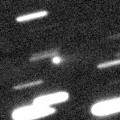
|
Now it is 16.0 mag (Oct. 24, C. Bell). It will brighten up to 15 mag and will be observable in excellent condition from November to February in the Northern Hemisphere. It locates somewhat low in the Southern Hemisphere.
Date(TT) R.A. (2000) Decl. Delta r Elong. m1 Best Time(A, h)
Nov. 15 7 7.59 28 39.9 1.757 2.484 127 15.2 3:08 (186, 26)
Nov. 22 7 7.66 28 20.2 1.689 2.480 134 15.1 3:02 (181, 27)
|
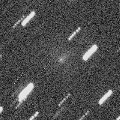
|
Now it is 15.5 mag (Oct. 28, Sandor Szabo). It keeps 15 mag from autumn to winter. It moves southwards fast in winter.
Date(TT) R.A. (2000) Decl. Delta r Elong. m1 Best Time(A, h)
Nov. 15 9 27.87 2 50.2 1.575 1.845 88 15.1 3:08 (234, 36)
Nov. 22 9 33.54 -1 27.2 1.526 1.862 93 15.1 3:02 (234, 42)
|

|
Now it is 13.3 mag (Sept. 22, Seiichi Yoshida). It keeps bright at 13-14 mag for a long time until 2014.
Date(TT) R.A. (2000) Decl. Delta r Elong. m1 Best Time(A, h)
Nov. 15 18 24.86 -12 36.4 7.681 7.015 44 15.1 20:21 ( 83, 13)
Nov. 22 18 26.83 -13 2.6 7.788 7.041 38 15.2 20:30 ( 78, 6)
|
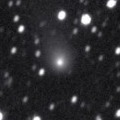
|
Now it is 14.2 mag (Oct. 4, Jakub Cerny). It keeps 13-14 mag and observable in good condition in the Northern Hemisphere for a long time from 2013 to 2014. It locates low in the Southern Hemisphere. Fragment B is also visible at 19-20 mag.
Date(TT) R.A. (2000) Decl. Delta r Elong. m1 Best Time(A, h)
Nov. 15 22 36.38 28 17.6 4.013 4.522 115 15.1 20:21 (160, 24)
Nov. 22 22 35.16 26 15.4 4.148 4.561 108 15.2 20:30 (151, 23)
|

|
It brightened up to 11-12 mag in 2012. It has already faded down to 14.9 mag (Aug. 12, Taras Prystavski). Appearing in the morning sky again. It will be observable at 15 mag in good condition again in 2015.
Date(TT) R.A. (2000) Decl. Delta r Elong. m1 Best Time(A, h)
Nov. 15 12 9.24 -9 40.7 9.152 8.506 46 15.1 3:08 (273, 12)
Nov. 22 12 9.71 -9 53.1 9.091 8.543 53 15.1 3:02 (271, 17)
|
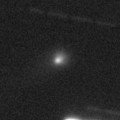
|
Now it is 15.4 mag (Oct. 28, Sandor Szabo). It will brighten up to 14 mag from 2015 to 2016. It is observable in good condition in the Southern Hemisphere. It locates somewhat low in the Northern Hemisphere.
Date(TT) R.A. (2000) Decl. Delta r Elong. m1 Best Time(A, h)
Nov. 15 4 33.29 -25 38.8 4.121 4.845 132 15.4 0:59 (180, 81)
Nov. 22 4 22.43 -25 34.3 4.081 4.817 133 15.4 0:21 (180, 81)
|
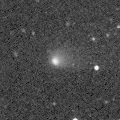
|
It is bright as 14.1 mag still now (Oct. 25, Seiichi Yoshida). It will be fading after this. But it keeps observable until March when it becomes fainter than 18 mag.
Date(TT) R.A. (2000) Decl. Delta r Elong. m1 Best Time(A, h)
Nov. 15 23 34.93 -15 24.3 1.747 2.346 115 15.6 20:21 (164, 70)
Nov. 22 23 39.64 -14 47.1 1.834 2.356 109 15.8 20:30 (145, 66)
|
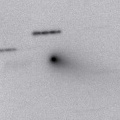
|
Now it is 14.7 mag (Oct. 27, Sandor Szabo). It will be fading after this. But it keeps observable in good condition until February when the comet will be fainter than 18 mag.
Date(TT) R.A. (2000) Decl. Delta r Elong. m1 Best Time(A, h)
Nov. 15 23 52.44 -6 23.6 1.815 2.498 123 15.8 20:21 (177, 61)
Nov. 22 23 56.38 -5 55.1 1.916 2.526 117 15.9 20:30 (161, 59)
|
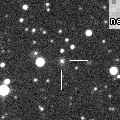
|
Now it is 16.1 mag (Sept. 30, Taras Prystavski). In the Northern Hemisphere, it keeps 15-16 mag and observable in excellent condition for a long time until early summer in 2015. In the Southern Hemisphere, it is not observable until mid January.
Date(TT) R.A. (2000) Decl. Delta r Elong. m1 Best Time(A, h)
Nov. 15 12 27.19 34 34.4 3.788 3.520 66 15.9 3:08 (239,-16)
Nov. 22 12 36.94 34 2.6 3.726 3.526 70 15.8 3:02 (238,-14)
|
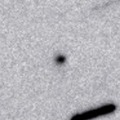
|
Now it is 16.2 mag (Oct. 27, Sandor Szabo). It keeps observable at 15-16 mag for a long time from 2015 to 2016. In the Northern Hemisphere, it is observable in excellent condition. It locates somewhat low in the Southern Hemisphere.
Date(TT) R.A. (2000) Decl. Delta r Elong. m1 Best Time(A, h)
Nov. 15 3 39.48 24 36.0 4.753 5.734 172 16.0 0:06 (180, 30)
Nov. 22 3 33.72 25 4.4 4.729 5.712 173 15.9 23:28 (180, 30)
|
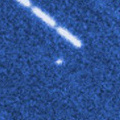
|
Now it is 18.6 mag (Oct. 4, D. Herald). It will brighten up to 9 mag in 2015 spring. But the condition of this apparition is bad. In the Southern Hemisphere, it keeps observable until winter when the comet will be 13 mag. But it is not observable around the brightest days. In the Northern Hemispehre, it keeps extremely low and hard to observe. It will be observable after 2015 autumn when the comet will fade out.
Date(TT) R.A. (2000) Decl. Delta r Elong. m1 Best Time(A, h)
Nov. 15 20 49.77 -46 31.1 2.554 2.433 71 16.2 20:21 ( 57, 53)
Nov. 22 21 0.03 -45 14.5 2.579 2.382 67 16.0 20:30 ( 59, 49)
|
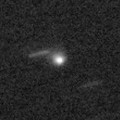
|
It will approach to the sun down to 0.3 a.u. in 2015 July, and it is expected to be bright. Now it is 16.0 mag (Oct. 8, Taras Prystavski). It keeps observable while the comet will be brightening gradually until January when the comet will be 15 mag. The condition is bad after that and it will be hard to observe. But in the Southern Hemisphere, it will be observable after mid July in 2015, and keeps observable while the comet will be fading gradually. In the Northern Hemisphere, it is extremely hard to observe after 2015.
Date(TT) R.A. (2000) Decl. Delta r Elong. m1 Best Time(A, h)
Nov. 15 22 52.07 -28 27.1 3.581 3.881 100 16.2 20:21 (111, 74)
Nov. 22 22 49.52 -27 46.6 3.610 3.798 93 16.1 20:30 (101, 66)
|
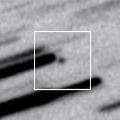
|
Now it is 17.5 mag (Oct. 18, M. Morales). It will pass the perihelion on Mar. 15. In the Northern Hemispehre, it keeps observable in good condition until late February. In the Southern Hemisphere, it keeps observable until mid February, but it locates low.
Date(TT) R.A. (2000) Decl. Delta r Elong. m1 Best Time(A, h)
Nov. 15 4 45.44 39 29.8 0.985 1.915 151 16.5 1:12 (180, 15)
Nov. 22 4 20.70 39 3.7 0.903 1.861 159 16.1 0:20 (180, 16)
|
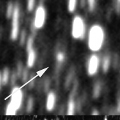
|
Now it is 16.7 mag (Sept. 23, Taras Prystavski). Distant object, but it keeps observable at 14 mag for a long time from 2015 to 2016.
Date(TT) R.A. (2000) Decl. Delta r Elong. m1 Best Time(A, h)
Nov. 15 19 14.26 -7 21.1 6.751 6.283 57 16.1 20:21 ( 95, 20)
Nov. 22 19 18.68 -7 29.6 6.809 6.253 52 16.1 20:30 ( 90, 13)
|
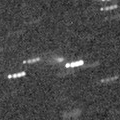
|
First return of a new periodic comet discovered in 2004. It brightened very rapidly as expected. Now it is 16.4 mag (Oct. 28, Catalina Sky Survey). It will be observable in excellent condition from autumn to winter.
Date(TT) R.A. (2000) Decl. Delta r Elong. m1 Best Time(A, h)
Nov. 15 22 31.90 5 50.4 0.726 1.404 108 16.2 20:21 (150, 44)
Nov. 22 22 52.67 5 40.6 0.750 1.403 106 16.1 20:30 (145, 43)
|
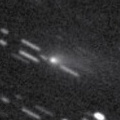
|
It brightened up to 2 mag by unusual major outburst in 2007. It brightened up to 12.6 mag in this apparition (June 25, Taras Prystavski). Now it is fading. It has already faded down to 16.7 mag (Oct. 2, Taras Prystavski). In the Northern Hemisphere, it keeps observable until it fades out in 2015. In the Southern Hemisphere, it keeps extremely low after this.
Date(TT) R.A. (2000) Decl. Delta r Elong. m1 Best Time(A, h)
Nov. 15 4 56.04 50 51.5 1.828 2.680 142 16.3 1:22 (180, 4)
Nov. 22 4 47.62 50 51.3 1.827 2.710 147 16.5 0:46 (180, 4)
|
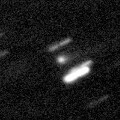
|
Now it is 17.0 mag (Oct. 2, Taras Prystavski). It will brighten up to 16 mag in winter, and will be observable in excellent condition.
Date(TT) R.A. (2000) Decl. Delta r Elong. m1 Best Time(A, h)
Nov. 15 8 26.03 14 2.5 3.681 4.079 106 16.6 3:08 (211, 35)
Nov. 22 8 27.45 13 43.1 3.584 4.080 113 16.5 3:02 (206, 37)
|
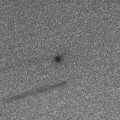
|
Now it is 17.3 mag (Sept. 23, Ken-ichi Kadota). It will brighten up to 16 mag and will be observable in excellent condition in winter.
Date(TT) R.A. (2000) Decl. Delta r Elong. m1 Best Time(A, h)
Nov. 15 10 46.82 9 14.8 2.076 2.017 72 16.7 3:08 (245, 18)
Nov. 22 10 59.69 8 20.4 2.012 2.024 76 16.6 3:02 (244, 20)
|
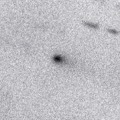
|
It brightened up to 14.6 mag in summer (July 8, Hidetaka Sato). Now it is fading. It has already faded down to 17.8 mag (Sept. 26, Taras Prystavski). It is fading much faster than predicted. The condition is good in the Northern Hemispehre. It keeps observable until next February when the comet will be fainter than 18 mag. It locates somewhat low in the Southern Hemisphere.
Date(TT) R.A. (2000) Decl. Delta r Elong. m1 Best Time(A, h)
Nov. 15 8 42.06 13 35.5 1.709 2.158 102 16.9 3:08 (215, 34)
Nov. 22 8 44.71 13 20.0 1.669 2.203 109 16.9 3:02 (211, 36)
|

|
Now it is 17.6 mag (Oct. 4, L. Arnold). It will pass close to the earth from spring to summer in 2016, and it is expected to be observable at 6-7 mag in good condition. In the Northern Hemispehre, it keeps observable in good condition until 2015 spring when the comet will brighten up to 15.5 mag. In the Southern Hemisphere, it keeps low for a long time until 2016 spring.
Date(TT) R.A. (2000) Decl. Delta r Elong. m1 Best Time(A, h)
Nov. 15 6 44.43 35 8.6 5.395 6.100 131 17.0 3:08 (180, 20)
Nov. 22 6 38.50 35 31.2 5.251 6.038 139 16.9 2:37 (180, 20)
|
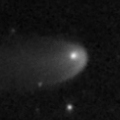
|
Now it is between 15.8 mag (Sept. 3, Taras Prystavski) and 18.5 mag (Sept. 2, M. Jaeger, E. Prosperi, S. Prosperi, W. Vollmann). It brightened up to 13 mag from 2011 to 2012. It will be fading after this, but it keeps brighter than 18 mag until 2015 spring.
Date(TT) R.A. (2000) Decl. Delta r Elong. m1 Best Time(A, h)
Nov. 15 3 31.40 -4 43.3 8.193 9.110 156 17.1 23:53 (180, 60)
Nov. 22 3 28.02 -4 35.2 8.242 9.146 154 17.1 23:22 (180, 60)
|
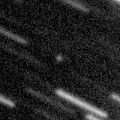
|
Peculiar asteroid with a cometary orbit of 45-years period. Now it is 18.3 mag (Oct. 4, M. Jaeger, et al.). It will brighten up to 17 mag from November to December, and will be observable in excellent condition.
Date(TT) R.A. (2000) Decl. Delta r Elong. m1 Best Time(A, h)
Nov. 15 5 9.63 20 12.1 1.816 2.740 154 17.3 1:36 (180, 35)
Nov. 22 4 46.87 17 11.0 1.783 2.751 165 17.1 0:46 (180, 38)
|

|
It brightened up to 12-13 mag from 2012 to 2013. Now it is fading. But it is bright as 16.5 mag still now (Oct. 17, Y. Sugiyama). It keeps 16-17 mag until autumn, and will be observable in good condition.
Date(TT) R.A. (2000) Decl. Delta r Elong. m1 Best Time(A, h)
Nov. 15 0 15.20 -17 49.0 3.541 4.151 122 17.2 20:37 (180, 73)
Nov. 22 0 14.11 -17 20.3 3.646 4.167 115 17.3 20:30 (164, 72)
|

|
Now it is 18.3 mag (Oct. 19, A. Diepvens). It will brighten up to 13 mag in 2016. In the Northern Hemisphere, it will be observable at 16 mag in excellent condition in this winter. It locates somewhat low in the Southern Hemisphere.
Date(TT) R.A. (2000) Decl. Delta r Elong. m1 Best Time(A, h)
Nov. 15 6 41.50 27 20.8 2.627 3.379 132 17.4 3:07 (180, 28)
Nov. 22 6 39.13 27 32.6 2.533 3.355 140 17.3 2:37 (180, 27)
|
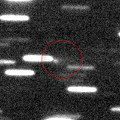
|
Now it is 18.6 mag (Oct. 24, Ken-ichi Kadota). It keeps observable at 17-18 mag from summer to winter in excellent condition in the Northern Hemisphere. It locates somewhat low in the Southern Hemisphere.
Date(TT) R.A. (2000) Decl. Delta r Elong. m1 Best Time(A, h)
Nov. 15 7 12.75 18 32.6 1.795 2.497 124 17.3 3:08 (189, 36)
Nov. 22 7 11.67 18 49.9 1.752 2.525 132 17.3 3:02 (182, 36)
|
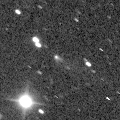
|
Now it is 18.1 mag (Oct. 1, Catalina Sky Survey). It was observed at 17 mag from 2013 to early 2014. It will be observable at 17.5 mag in good condition again from autumn to winter in 2014.
Date(TT) R.A. (2000) Decl. Delta r Elong. m1 Best Time(A, h)
Nov. 15 8 38.64 13 59.6 2.867 3.250 103 17.5 3:08 (214, 34)
Nov. 22 8 40.72 13 36.8 2.785 3.263 110 17.4 3:02 (210, 36)
|
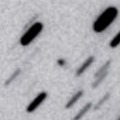
|
Now it is 17.6 mag (Oct. 24, Ken-ichi Kadota). It was observed around 17-18 mag in early 2014. It will be observable around 17-18 mag again from 2014 autumn to 2015 spring, in excellent condition in the Northern Hemisphere. It is not observable in the Southern Hemisphere.
Date(TT) R.A. (2000) Decl. Delta r Elong. m1 Best Time(A, h)
Nov. 15 10 41.51 53 55.4 4.964 5.119 93 17.6 3:08 (211,-13)
Nov. 22 10 46.58 54 6.1 4.889 5.121 98 17.5 3:02 (210,-11)
|
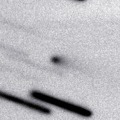
|
It brightened up to 15.5 mag in summer (July 28, Ken-ichi Kadota). Now it is fading. It has already faded down to 17.6 mag (Oct. 22, Catalina Sky Survey). In the Northern Hemisphere, it keeps observable in good condition until the comet fades out. In the Southern Hemisphere, it keeps extremely low.
Date(TT) R.A. (2000) Decl. Delta r Elong. m1 Best Time(A, h)
Nov. 15 10 5.58 33 41.1 1.673 1.958 91 17.9 3:08 (220, 7)
Nov. 22 10 16.41 34 19.5 1.643 1.999 95 18.1 3:02 (218, 8)
|
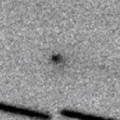
|
Now it is 17.0 mag (Sept. 20, Ken-ichi Kadota). It keeps observable at 17-18 mag from August to November in excellent condition in the Northern Hemisphere. It locates somewhat low in the Southern Hemisphere.
Date(TT) R.A. (2000) Decl. Delta r Elong. m1 Best Time(A, h)
Nov. 15 8 9.71 22 6.7 0.986 1.642 112 17.9 3:08 (203, 29)
Nov. 22 8 13.78 22 16.3 0.968 1.682 118 18.1 3:02 (199, 30)
|

|
First return of a peculiar asteroid 1998 HO121. It keeps observable at 17-18 mag from 2015 to 2016.
Date(TT) R.A. (2000) Decl. Delta r Elong. m1 Best Time(A, h)
Nov. 15 7 25.90 7 29.4 2.840 3.434 119 18.1 3:08 (195, 46)
Nov. 22 7 26.55 7 3.8 2.738 3.410 125 17.9 3:02 (188, 48)
|
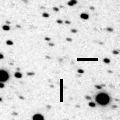
|
It was discovered in 1819, and re-discovered in 2003. Although it was predicted to be extremely faint as 26 mag, it unusually brightened up to 17.5 mag in outburst in 2013 July (July 6, Hidetaka Sato). However, no observations have been reported since mid July. It will pass the perihelion in 2014 August, and will approach to the sun down to 0.96 a.u. The brightness is predicted to be 23 mag at best. However, if the cometary activity continues, it may be observed brighter. Ken-ichi Kadota reported it was not detected, fainter than 16.3 mag, on May 21.
Date(TT) R.A. (2000) Decl. Delta r Elong. m1 Best Time(A, h)
Nov. 15 12 34.33 1 0.9 1.958 1.440 45 24.0 3:08 (268, 1)
Nov. 22 12 49.87 -0 29.0 1.976 1.504 47 24.1 3:02 (268, 3)
|
|
![]()
 191P/McNaught
191P/McNaught 119P/Parker-Hartley
119P/Parker-Hartley C/2013 U2 ( Holvorcem )
C/2013 U2 ( Holvorcem ) 106P/Schuster
106P/Schuster 304P/2014 L4 ( Ory )
304P/2014 L4 ( Ory ) (347449) 2012 TW236
(347449) 2012 TW236 289P/Blanpain
289P/Blanpain![]()

















































